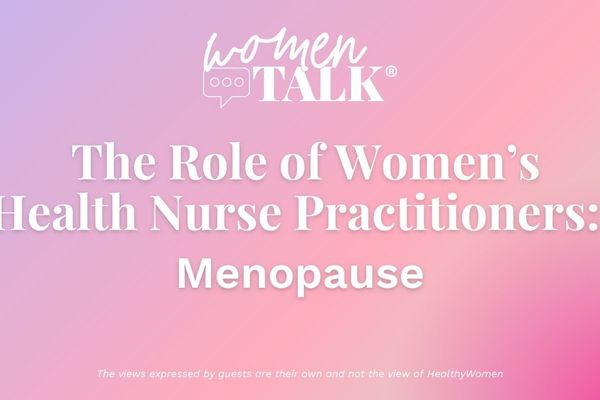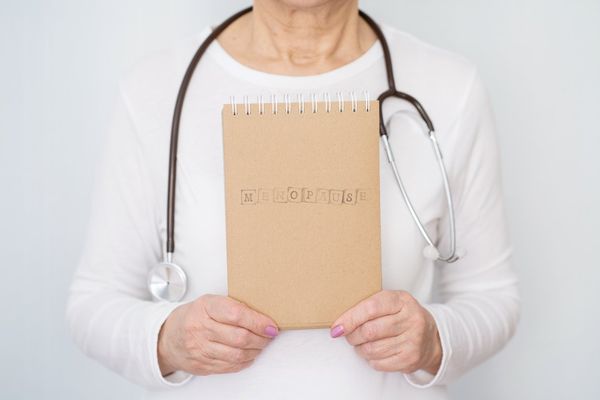Although menopause is a normal part of aging, many women can feel unprepared for the physical and mental changes that come with this stage of life. For many women of color, the menopausal transition can be even more intense, and researchers are working to find out why.
We reached out to Octavia Cannon, D.O., an osteopathic OB-GYN in East Lansing, Michigan, to ask her about racial and ethnic differences in menopausal symptoms, barriers to care, and how women can be their own advocates to receive the treatment they need.
This interview has been lightly edited for clarity and length.
HealthyWomen: Studies of menopause have found differences in the onset and duration of menopause based on race. What are some of the most significant differences?
Octavia Cannon: The gold standard for menopause discussion is the Study of Women’s Health Across the Nation (SWAN), which looked at all aspects of how the body and mind are affected by menopause and how racial and ethnic differences could impact the onset and length of the menopausal transition.
We’ve learned that African American, Asian and Latinx women tend to enter menopause and perimenopause a couple of years earlier than white women. We’ve also learned that African American women are three times more likely to experience early menopause, which is menopause before 40.
HealthyWomen: How do those differences manifest in terms of vasomotor symptoms (VMS), like hot flashes and night sweats?
Octavia Cannon: African American, Latinx and other women of color tend to experience vasomotor symptoms for a longer period of time than white women, even after they’ve entered postmenopause (have gone a full year without a period) stage. Native American women reported having the most hot flashes of any racial group. And statistically, African American and Latinx women had more of the vasomotor symptoms, like hot flashes, than white women. Vaginal dryness was more of an issue among Latinx women.
HealthyWomen: Based on your experience as an OB-GYN, you said you wouldn’t be surprised if these numbers underestimated women’s experience of menopause. Why is that?
Octavia Cannon: Sometimes women might not connect some of the conditions they’re having to menopause. They could be experiencing night sweats, mood swings and sleep issues and just think these are stress-related. Sometimes people don't start asking their healthcare providers about menopause until 50, even though they could have started having menopausal symptoms much earlier.
HealthyWomen: Are these racial and ethnic differences genetic or are they associated with socioeconomic factors?
Octavia Cannon: There are certainly genetic factors we can’t always understand, but I also think lifestyle, socioeconomic status and life stressors in general play a role. Healthcare providers have to look at individual patients to see what changeable risk factors could also be in play, such as diet and physical activity. Just like they play a part in conditions like diabetes, heart disease and high blood pressure, they can contribute to menopausal onset and symptoms to some extent.
HealthyWomen: How does lack of access to medical care affect racial/ethnic differences in menopause?
Octavia Cannon: A lack of insurance, inability to get to a healthcare provider and historic distrust of the medical system play a role. And let’s be honest — in the ’40s, ’50s or ’60s, no white male doctor was going to talk to a Black female patient about how she was feeling about menopause. Or any woman, really — maybe you have access to HCPs today, but are they asking the right questions or even making themselves open to having a conversation? Many disparities in treatment can be connected to the biases of healthcare providers.
HealthyWomen: What can providers do to help eliminate some of these barriers?
Octavia Cannon: During a regular annual exam, I try to ask open-ended questions to see how my patients are feeling, or if they’re having any issues with anxiety or depression. That can start the conversation and help determine whether we need to start talking about menopause. I feel like I’m always running 15 to 30 minutes behind schedule because I take my time with patients to make sure they have all the information they need. Providers can also provide education by being accessible in other ways — they can put up a web page, be active on social media in discussing menopause. I like to get into the community and do workshops at churches and with women’s groups.
HealthyWomen: Is there more women can do to take care of their health during menopause?
Octavia Cannon: I think women of color have often been taught not to ask a lot of questions and just say, “This is a part of life.” Although I think racial disparities exist and a large part of the responsibility falls on the healthcare provider, sometimes we are our own worst enemy in taking care of ourselves. I always tell patients, You have to be your own advocate. If there's no one to speak for you, you’ve got to learn how to speak for yourself.
If you don’t feel comfortable doing it in person, use your online patient portal to send a question. Schedule a telehealth appointment. Call and ask to speak to the triage nurse if you have other questions. Research information online so you know what to ask your provider. You have to find your most comfortable way to communicate. My overall blanket statement is that communication is the key to finding your happy place and that women should practice self-care, self-advocacy and self-love.
This resource was created with support from Pfizer and developed in partnership with American Association of Nurse Practitioners.
- Is It Menopause or Something Else? - HealthyWomen ›
- Black Women's Health Problems During Menopause Haven't Been ... ›
- Black Women Often Suffer in Silence During Menopause. I'm Going ... ›
- Women Deserve Care from Healthcare Providers Who Understand Menopause - HealthyWomen ›
- 3 Tips for Finding a Healthcare Provider Who Specializes in Menopause - HealthyWomen ›
- The Benefits of Using Telehealth During Menopause - HealthyWomen ›
- Tips for Reducing Vasomotor Symptoms During Menopause - HealthyWomen ›







